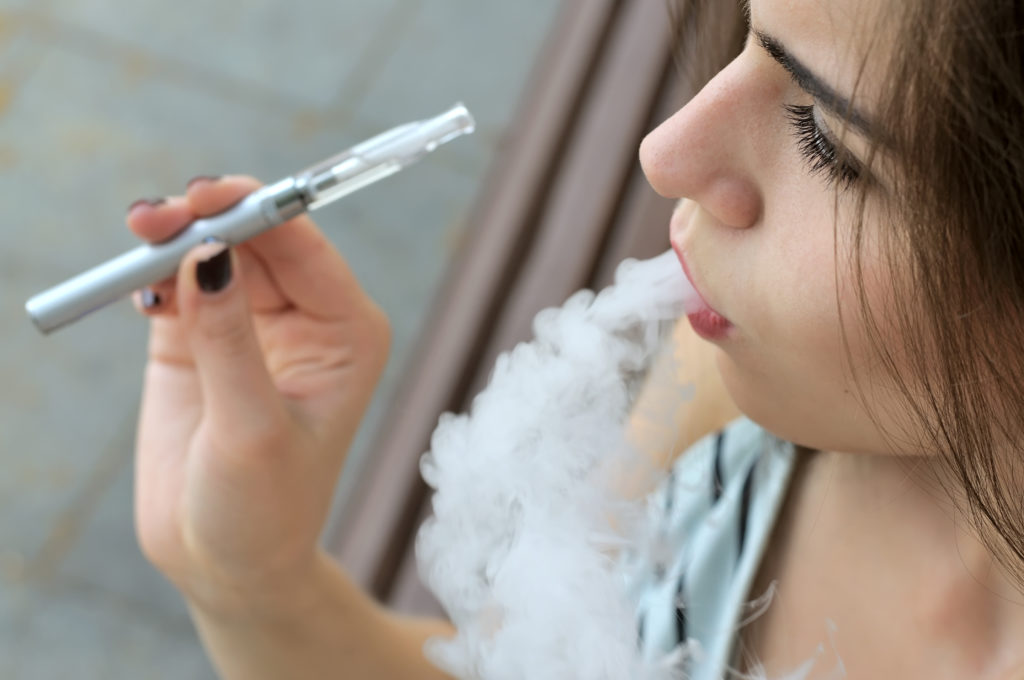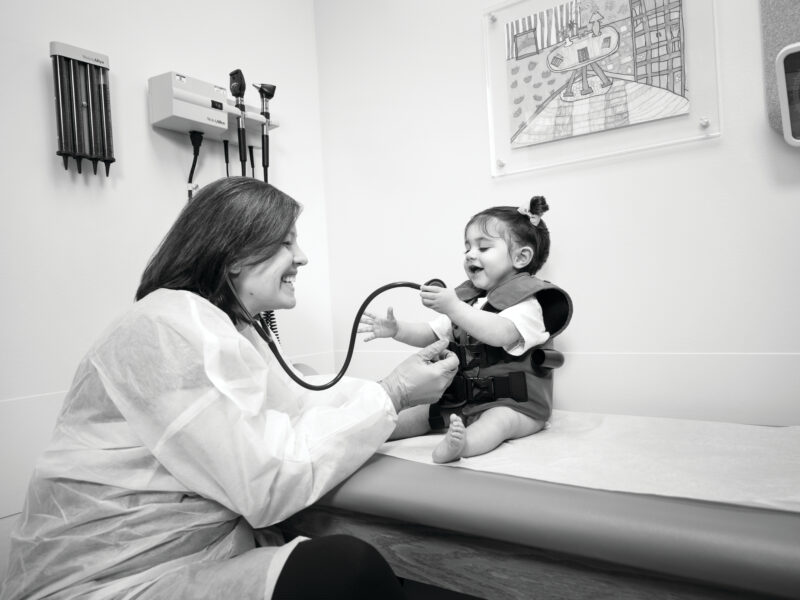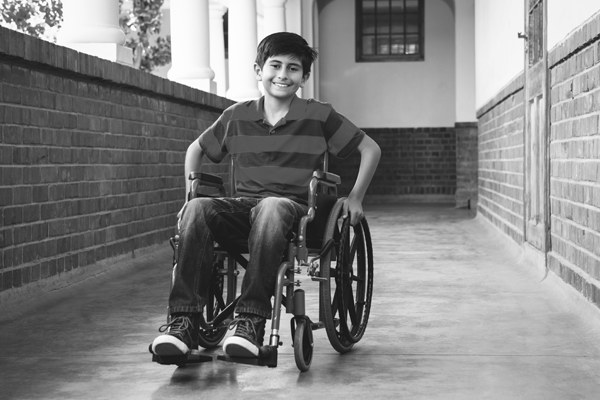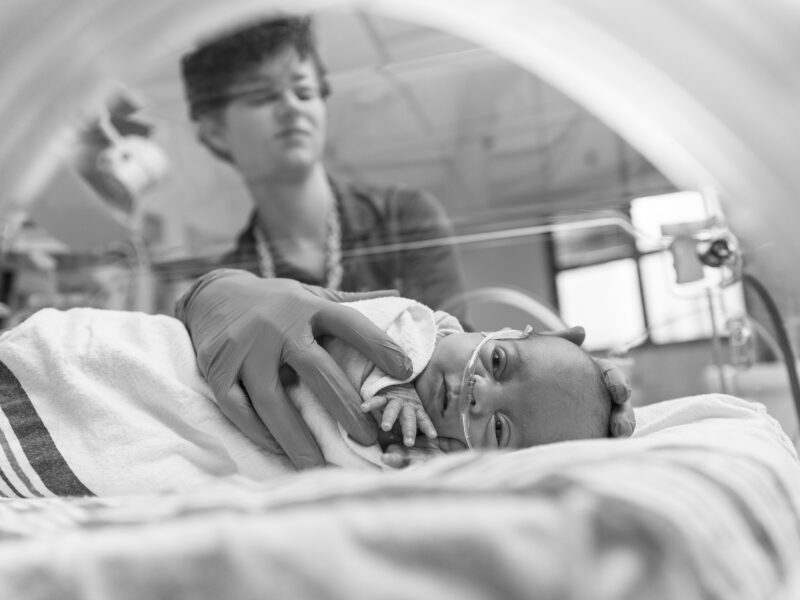Eosinophilic Pneumonia Brought on by Vaping
Eosinophilic Pneumonia Brought on by Vaping https://pediatricsnationwide.org/wp-content/uploads/2021/03/AdobeStock_115311041-1024x680.jpg 1024 680 Mary Bates, PhD Mary Bates, PhD https://secure.gravatar.com/avatar/c6233ca2b7754ab7c4c820e14eb518c8?s=96&d=mm&r=g- June 03, 2020
- Mary Bates, PhD

A case study emphasizes the importance of a detailed history in differentiating between eosinophilic and infectious pneumonia.
Eosinophilic pneumonia is a rare and potentially life-threatening condition. It is often seen in previously healthy individuals and can be difficult to distinguish from infectious pneumonia, leading to delays in the appropriate treatment.
According to a new case report published in the journal Pediatrics, the development of eosinophilic pneumonia and lymphadenopathy could be associated with the use of e-cigarette, or vaping, products.
In this report, doctors from Nationwide Children’s describe the diagnosis and treatment of a 16-year-old girl with a year-long history of vaping in conjunction with tetrahydrocannabinol (THC) cartridge use. The patient presented to the emergency department with a 3-month history of cough and shortness of breath and a one-week history of abdominal discomfort, diarrhea, fever and chest pain. Four days earlier she was seen at a local urgent care facility and given azithromycin for pneumonia.
The patient’s urine toxicology test was positive for THC, which she admitted to using in conjunction with vaping. Her computed tomography chest angiogram revealed multifocal airspace ground-glass opacities in all lobes and hilar lymphadenopathy. Further testing included a comprehensive infectious and immunologic workup.
Due to the negative infectious workup and persistent radiologic findings, paired with the patient’s history of vaping, the pulmonary service was consulted. They determined she should undergo a bronchoscopy with bronchioalveolar lavage (BAL), which found considerable pulmonary eosinophilia.
The patient was started on systemic corticosteroids and was successfully weaned off supplemental oxygen within 24 hours. One week after discharge, her radiologic findings had resolved. She reported complete resolution of her symptoms within two weeks of initiating corticosteroid therapy.
“Although she was initially admitted to the infectious disease service, the primary team’s investigative work uncovered a social history of vaping and they thought it was important to get pulmonary involved early on,” says Eric S. Mull, DO, a pediatric pulmonary fellow at Nationwide Children’s and an author of the case report.
“That’s when we decided to do the bronchoscopy with BAL, which is the only way to establish the diagnosis of eosinophilic pneumonia over/versus an infectious pneumonia.”
Through this example, Dr. Mull and his colleagues highlight the potential risk of unregulated vaping and illicit THC use among teenagers and young adults. Institutions around the country have reported a unique vaping-related injury, now known as EVALI (E-cigarette, or Vaping, Product Use-Associated Lung Injury).
“Vaping is a relatively new form of delivery for nicotine and THC that is just starting to be regulated,” says Dr. Mull. “We don’t really know the long-term effects of using these devices.”
Dr. Mull says that their case report highlights the importance of taking a comprehensive history, especially in situations like this where two different types of diseases processes look very similar but the treatments are vastly different.
“Without the knowledge that comes out of a detailed history, you could mistakenly diagnose someone with an infectious pneumonia and treat them with antibiotics or antivirals when, in fact, it is an allergic process and they need support with steroids,” he says. “Missing that key information can lead to a delay in appropriate therapy.”
Reference:
Mull ES, Erdem G, Nicol K, Adler B, Shell R. Eosinophilic pneumonia and lymphadenopathy associated with vaping and tetrahydrocannabinol use. Pediatrics. 2020; 145(4):e20193007.
About the author
Mary a freelance science writer and blogger based in Boston. Her favorite topics include biology, psychology, neuroscience, ecology, and animal behavior. She has a BA in Biology-Psychology with a minor in English from Skidmore College in Saratoga Springs, NY, and a PhD from Brown University, where she researched bat echolocation and bullfrog chorusing.
-
Mary Bates, PhDhttps://pediatricsnationwide.org/author/mary-bates-phd/December 27, 2016
-
Mary Bates, PhDhttps://pediatricsnationwide.org/author/mary-bates-phd/
-
Mary Bates, PhDhttps://pediatricsnationwide.org/author/mary-bates-phd/
-
Mary Bates, PhDhttps://pediatricsnationwide.org/author/mary-bates-phd/
- Posted In:
- In Brief






